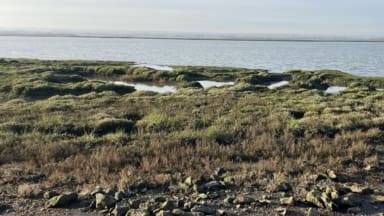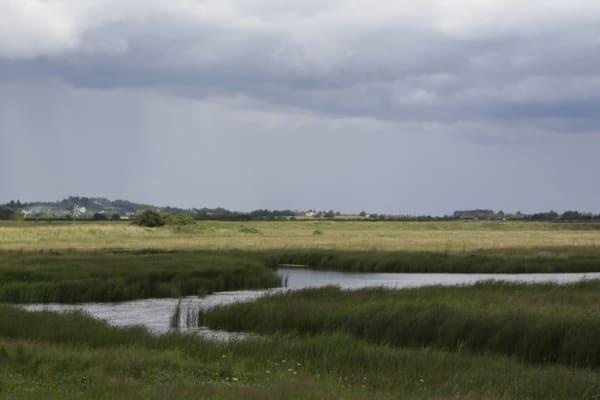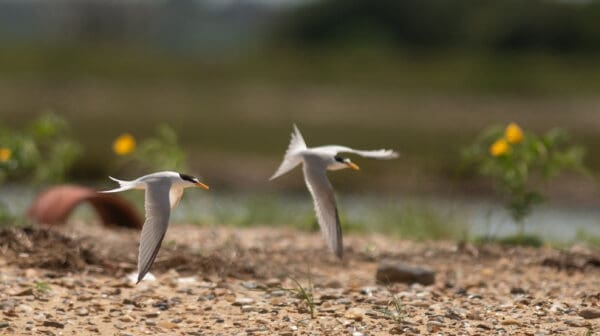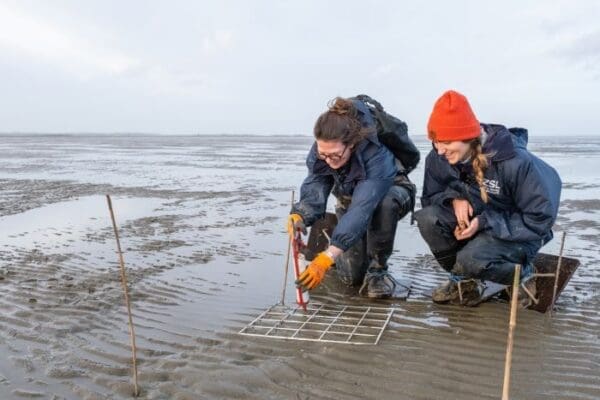
Led by the international conservation charity, the Zoological Society of London (ZSL), the ‘Transforming the Thames‘ project will bring back wildlife in the Greater Thames Estuary by re-connecting the fragmented seascape through habitat restoration, pressure reduction, and protection.
Conducted as a partnership, the collaboration will deliver the restoration of over 320ha coastal habitat across the marine and terrestrial realm that will support flourishing populations of wild animals and plants. The restored habitats will generate ecosystem services benefiting the 8 million people living in the seascape, as well as showcasing how large-scale seascape restoration can take place in the waters of a capital city. Funding for the project, worth almost £4 million was awarded by the Endangered Landscape and Seascape Programme.
The project is a partnership between 19 organisations working in the Thames; Bird Aware Essex Coast, Crown Estate, Environment Agency, Essex and Suffolk Rivers Trust, Essex Rivers Hub Catchment Partnership, Essex County Council, Essex Local Nature Partnership, Essex Wildlife Trust, Kent and Essex IFCA, Kent County Council, Kent Wildlife Trust Group (Adonis Blue Environmental Consultancy), Medway and Swale Estuary Partnership, Natural England, the Port of London Authority (PLA), Project Seagrass, RSPB, Thames Estuary Partnership, University of Essex and ZSL.
Anna Cucknell, ZSL’s UK Coastal Habitat Recovery Programme Manager said: “The Thames can recover, but it needs our help. ZSL has been working in the area for over 20 years, so we’re delighted that this funding allows the coalition to take restoring the Thames to the next level and really scale up what we can achieve together.
“Spanning an impressive 250,000 hectares from Felixstowe in the north to Whitstable in the south, the Greater Thames Estuary marks where the River Thames meets the North Sea, and is one of Europe’s most important wetlands. This intricate tapestry of habitats provides a home and nursery grounds to an abundance of native wildlife, from Critically Endangered European eels and ‘superhero’ water filtering oysters, to much beloved species like porpoises, seahorses and lapwings.
“Decades of degradation and fragmentation from building works, pollution, overfishing and climate change have unfortunately left the estuary in a poor state. We all rely on healthy, functioning ecosystems for our own wellbeing. From shipping to science, we’re uniting people from across the region to bring this incredible landscape to life once more.”



The project will focus on restoring six vital habitats found across the estuary, native oyster beds, seagrass meadows, saltmarshes, coastal grazing marsh, saline lagoons, and sand and shingle bird nesting habitat. The Thames has lost over 95% of native oysters since 1800s and up to 44% of seagrass since 1936 while Essex has lost 92% of its coastal grazing marsh between 1938-1981, removing the very foundations that native wildlife relies upon.
Through restoring these habitats and rebuilding healthy, resilient ecosystems throughout the estuary, the work will also help reduce flooding and coastal erosion, improve water quality and capture carbon, helping to tackle climate change while also lessening its impacts on local communities.
Alan Johnson, RSPB South East Regional Manager said: “The Thames Estuary is an amazing place for wildlife and rightly recognised as internationally important. We’re really excited to be working with the Zoological Society of London on the Transforming the Thames project, which will bring together abroad range of partners for the first time, all with the interests of the Estuary at heart. We will be creating large areas of new wetland habitat as part of this project, creating space for important species, such as redshank and lapwing. I’m feeling really optimistic about the future of the Thames.”
By recovering these precious ecosystems so close to London and restoring the cultural, social and economic benefits that they bring, the ambitious project hopes to set an example for other major cities in the UK and globally of what can be achieved for people and nature.

